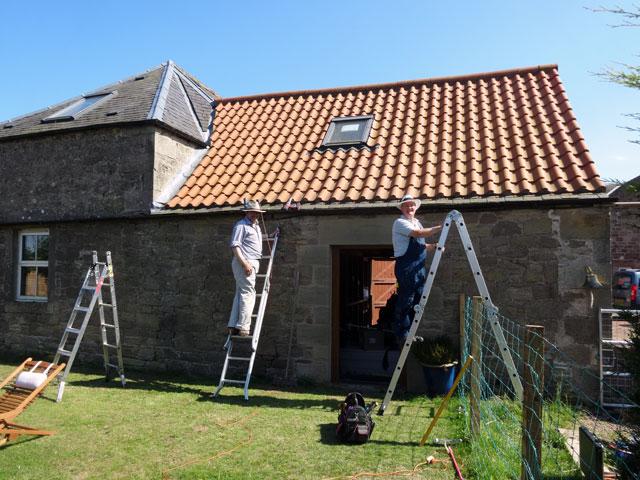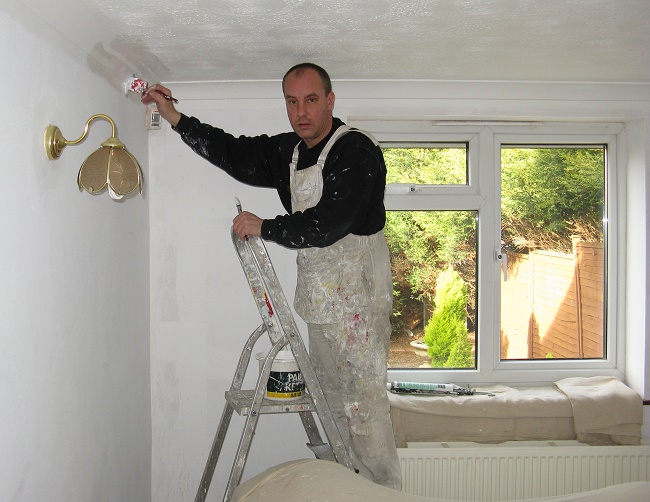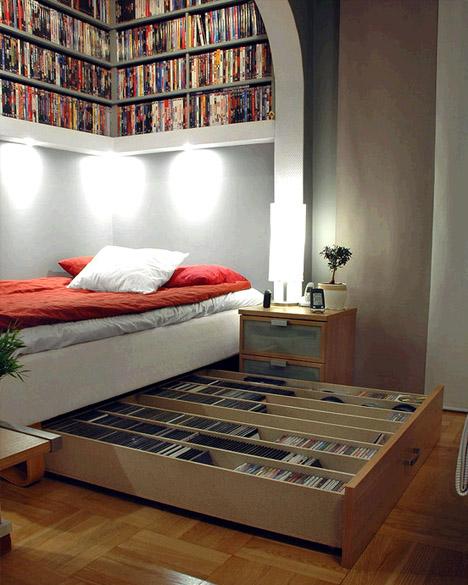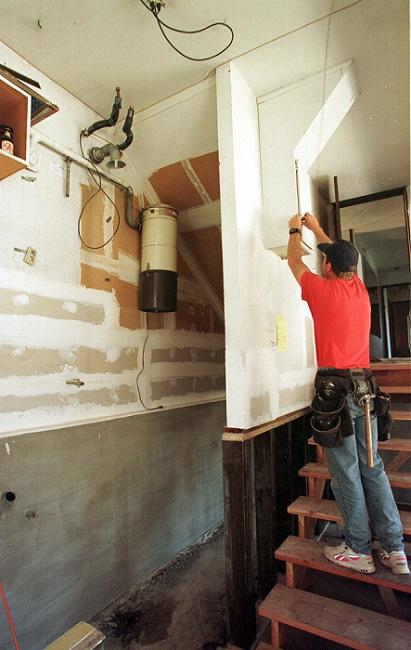
(guest post by Francesca Holmes)
When it comes to the housing market, frequently the best deal in your city or town is not a brand new home, but rather one that is a resale property.
Buying a resale home can present a number of advantages aside from cost savings on the initial purchase price; they are also a great opportunity to redesign and renovate the space to a style you will love.
More individuals are acknowledging the inherent value of purchasing a resale home that requires updating. As long as the home has what most call “good bones” in terms of structural integrity and foundation, other changes to turn it from a “fixer upper” to the home of your dreams are manageable, particularly if you are willing to save money by doing most of the work yourself.
If you are considering the purchase of a resale home in need of some repair, we’ll discuss the common improvements and what they involve. We will also identify which tasks require a certified professional to avoid safety hazards or code violations, and which ones are well within the ability of an average homeowner with entry level to average handyman/woman skills.
Code Green: Cosmetic Changes and Updating
If you are a homeowner who could see beyond superficial and cosmetic flaws, you already possess the skills you need to design and make aesthetic changes and improvements to your home that will increase its appeal and property value. You will be amazed how much of a difference a good coat of paint can make to a home, but then again, if you purchased the home you probably have a very clear idea of its design potential; hiding just underneath some really ugly wallpaper.
Wallpaper is not as common now as it has been in the last four decades. Today, most individuals prefer drywall or tile (for bathroom walls) for interior spaces. However, older homes often have high quality wallpaper installed to hide flaws, such as cracks which may indicate structural issues.
The bad news is that for removing wallpaper while leaving drywall intact, there is no shortcut. The procedure to remove wallpaper is made a little easier by brush-on solvents that cause the adhesive to loosen. First, abrade the wallpaper surface with a perforation tool. Then brush on the solvent and allow it to cure (in a well ventilated area), and you will be able to use a paint scraper to gently remove large pieces at a time.

If you are choosing to paint walls in your home, it is important to invest in high quality paint and primer. Many homeowners who choose to skip the primer end up discovering that without preparation, the walls will absorb paint quickly and unevenly. Putting more colored paint on top is a solution, but it typically costs three or four times more than using a single coat of high-quality primer before starting.
If you are committed to protecting the air quality of your home, it is worthwhile investing in the highest grade of interior paints. In most home improvement stores, organic, scent-free and VOC (volatile organic compound) free paints are available. If you have invested in things like organic latex mattresses or organic rugs for your home, then go the extra mile and invest in VOC free paint that will have everyone breathing easier as well.
Adding additional storage to your space is also very possible for the DIY homeowner. With the onset of popular cultural movements like “Tiny House Living” and other small home cultural shifts, there are incredibly versatile storage solutions on the market. Check out “How to Make Your Garage a Storage Powerhouse” by Mary Jo Bowling, for Houzz.com.

Installing exterior locks, or moving and installing new appliances are two tasks that can easily be done by the homeowner in order to save money. Most appliances are plug-in and ready to use, while exterior locks come complete with kits from the hardware store and easy to follow instructions.
Depending on your lighting scheme in your home, many types of interior lighting can be DIY installed by someone with a medium level of skill with tools and equipment. Recessed lighting (mounted into walls or ceilings) is by far the most difficult to install without damaging the surrounding ceiling. However other types of lights such as under cabinet LED lighting (accent or surface lighting) is very easy to install. Did you know that LED kitchen lighting is affordable and environmentally friendly? For more information, read: “Energy Saving Task Lighting in the Kitchen: 10 LED Under Cabinet Lights” by Kate Legere for Apartment Therapy.
Code Yellow: Some Assistance Required
Replacing the flooring in your home can be done with some training if professional installation is not an option for your budget. The good news is that every home improvement store offers free or affordable classes to teach you how to install your own tile, wood, laminate or vinyl flooring. When it comes to wall carpeting, however, the installation requires carpet stretching machines and other tools that may actually make it more expensive to try to do it yourself.

Replacing old windows with newer, better insulated and energy efficient windows can not only make your home look better, it can save you on your annual energy bill. If you are confident in your abilities to install new windows, ask for help when it comes to measuring and ordering the right sizes. Have professionals measure to make sure the size is right before ordering each window, and remember that for vintage homes, a custom size window may need to be found or built specifically for your home.
Code Red: Certified Professionals Only
If it has to do with plumbing or electricity, it is better to leave it to the licenses and certified professionals for a number of reasons. First, your local municipality will require all electrical and sewer work to be completed by a certified technician who is trained to complete work that will meet all building code requirements. All intentions to save money are good, but the liability and safety risk of living (and insuring) a home that has faulty wiring is not worth the money you would save to have it installed legally and correctly.

When it comes to kitchen and bathroom remodeling, due to the nature of both the electric panel placement, necessary duct work and plumbing, it is really best to leave it to the professionals to avoid problems. If you are looking to save money on a kitchen or bathroom renovation, you can offer to demolish and remove the old cupboards, vanity, sink, tile or flooring to reduce demolition costs.
Remember that renovation is an investment in your home, aesthetic and personal comfort, the resale value and safety of your space. Never start a renovation if you are not confident in your ability to complete the job to building code. If you are not certain what the building improvement guidelines or bylaws are in your area, contact your local government or municipality before starting any new building project.



